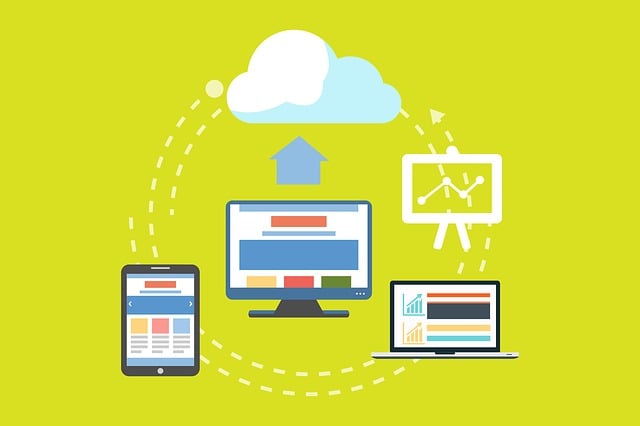
What is Artificial Intelligence?
Artificial Intelligence (AI) is a branch of computer science that focuses on creating systems capable of performing tasks that typically require human intelligence. These tasks include learning, reasoning, problem-solving, perception, and natural language processing. Unlike traditional systems that follow predefined instructions, AI can learn from experience, adapt to new situations, and improve its performance over time.
What is Artificial Intelligence Used For?
AI is applied across a wide range of fields and has a significant impact on our daily lives. Some of the most common uses include:
1. Task Automation: AI can perform repetitive and routine tasks with high accuracy and efficiency, freeing humans to focus on more complex and creative activities.
2. Data Analysis: AI systems can process large volumes of data to identify patterns, make predictions, and inform decision-making.
3. Customer Service: AI-powered chatbots and virtual assistants provide support and assistance to customers 24/7.
4. Speech Recognition and Natural Language Processing: Virtual assistants like Siri, Alexa, and Google Assistant use AI to understand and respond to voice commands.
5. Computer Vision: AI is used in facial recognition systems, medical image diagnostics, and autonomous vehicles.
6. Gaming and Entertainment: AI enhances gaming experiences and personalizes content on streaming platforms.
How Does Artificial Intelligence Work?
AI operates based on algorithms and mathematical models that enable machines to learn from data. The two main approaches in AI development are supervised learning and unsupervised learning.
1. Supervised Learning: In this approach, AI algorithms are trained on labeled data—data that has already been classified or categorized. The system learns from these examples and can make predictions or decisions based on new data it receives. For example, an AI system trained on labeled images of cats and dogs can learn to distinguish between the two animals in new images.
2. Unsupervised Learning: Here, algorithms work with unlabeled data and attempt to find patterns and intrinsic relationships within the data. This approach is useful for data exploration and anomaly detection. For instance, an AI system could analyze financial transactions and detect unusual behaviors that may indicate fraud.
In addition to these approaches, there are other AI techniques and models such as reinforcement learning, where systems learn to make decisions through trial and error feedback, and neural networks, which are brain-inspired structures used for complex tasks like image recognition and natural language processing.
Brief History of Artificial Intelligence
The history of AI dates back to the mid-20th century, although its philosophical roots can be traced back to antiquity, when Greek and Chinese thinkers speculated about creating thinking machines. Below is a brief timeline of the most important milestones in AI evolution:
1. 1950s – Early Concepts and Algorithms: Alan Turing, a British mathematician, proposed the “Turing Test” in 1950, a criterion for determining whether a machine can exhibit intelligent behavior indistinguishable from that of a human. In 1956, John McCarthy coined the term “Artificial Intelligence” at a conference at Dartmouth, considered the official starting point of the field.
2. 1960s – Early Research: During this decade, the first AI programs capable of solving mathematical problems and playing chess were developed. Researchers also began exploring natural language processing and visual perception.
3. 1970s – AI Winter: AI experienced a period of stagnation known as the “AI Winter” due to unmet expectations and lack of significant advances. Funding and interest in AI research decreased considerably.
4. 1980s – Resurgence and Neural Networks: AI revived with the development of new approaches such as artificial neural networks and expert systems, which were programs designed to emulate the knowledge and decision-making of human experts in specific fields.
5. 1990s – Progress and Commercial Applications: During this decade, AI began to show its potential in commercial applications. IBM’s chess-playing computer Deep Blue defeated world champion Garry Kasparov in 1997, which was a significant milestone. Advances were also made in speech recognition and automatic translation.
6. 2000s – Big Data and Deep Learning: The availability of large volumes of data (big data) and increased computer processing power drove the development of advanced techniques such as deep learning. Deep neural networks enabled significant advances in areas such as image recognition and natural language processing.
7. 2010s and Beyond – AI in Everyday Life: AI became increasingly integrated into everyday life, with applications in smartphones, autonomous cars, recommendation systems, and more. The development of language models like GPT-3 and the creation of AI systems capable of generating text, music, and art have expanded the boundaries of what AI can achieve.
Everyday Examples of Artificial Intelligence
AI has become an integral part of our daily lives, often without us realizing it. Here are some common examples of how AI is present in our daily activities:
1. Virtual Assistants: Apple’s Siri, Amazon’s Alexa, and Google Assistant use AI to understand and respond to voice commands, perform tasks such as setting reminders, answering questions, and controlling smart home devices.
2. Personalized Recommendations: Streaming services like Netflix and Spotify use AI algorithms to analyze your viewing and listening habits and recommend content you might like. Amazon also employs AI to suggest products based on your past purchases.
3. Spam Filters: Email systems like Gmail use AI to detect and filter out unwanted or potentially dangerous emails, improving email management efficiency and security.
4. Social Media: Platforms like Facebook, Instagram, and Twitter use AI to personalize your news feed, identify and remove inappropriate content, and suggest connections with other users.
5. Navigation Apps: Google Maps and Waze use AI to provide optimized routes, predict traffic conditions, and suggest travel times based on real-time data and historical patterns.
6. Photography and Video: Modern smartphones use AI to enhance photo quality, apply effects, and perform facial recognition for unlocking the device or tagging people in photos.
7. Health and Wellness: Health apps like Fitbit and Apple Health use AI to monitor your sleep patterns, physical activity, and heart rate, providing personalized recommendations to improve your well-being.
8. Banking and Finance: Banks use AI to detect fraud, manage risks, and offer personalized services such as financial advice and credit analysis.
Benefits and Challenges of Artificial Intelligence
Benefits:
1. Efficiency and Productivity: AI can perform repetitive and complex tasks with high accuracy and speed, increasing efficiency and productivity across various industries.
2. Enhanced Decision-Making: AI systems can analyze large volumes of data and provide valuable insights for informed decision-making.
3. Innovation: AI is driving innovation in fields such as medicine, education, agriculture, and transportation, creating new opportunities and solutions.
4. Personalization: AI enables the customization of services and products, improving user experience and better meeting their needs.
Challenges:
1. Ethics and Privacy: The use of AI raises ethical and privacy concerns, especially regarding the collection and use of personal data.
2. Bias and Discrimination: AI algorithms may perpetuate existing biases in training data, leading to unfair and discriminatory decisions.
3. Job Impact: AI-driven automation may result in job losses in certain sectors, necessitating strategies for workforce relocation and retraining.
4. Security: AI system security is crucial to prevent misuse, such as cyberattacks or data manipulation.
The Future of Artificial Intelligence
The future of AI is promising and full of possibilities. As technology advances, significant developments are likely in areas such as artificial general intelligence (AGI), where machines will not only perform specific tasks but also have the ability to understand, learn, and adapt similarly to humans.
AI will also play a crucial role in addressing some of humanity’s biggest challenges, such as climate change, personalized healthcare, and space exploration. However, it is essential to address the ethical and security challenges associated with AI to ensure that its benefits are shared equitably and risks are minimized.
Artificial Intelligence is a transformative technology that is changing how we live, work, and interact. From virtual assistants to recommendation systems, AI is integrated into our daily lives in ways that often go unnoticed. However, with its benefits come challenges that must be addressed to ensure ethical and responsible development of the technology. As we move towards the future, AI will continue to play a key role in innovation and solving global challenges, and it will be essential to stay informed and adapt to its advances.



